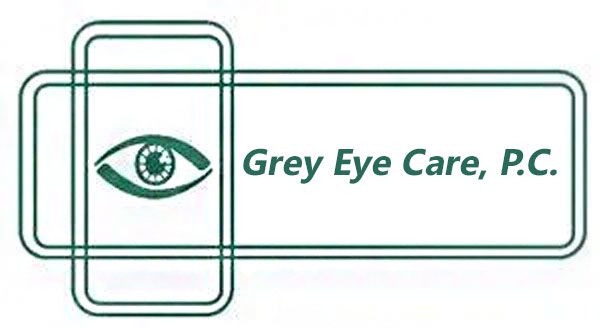Cataract Surgery Procedures
Emergency Appointments Available | Over 30 Years of Experience | Insurance Accepted
Emergency Appointments Available
Over 30 Years of Experience
Insurance Accepted
Hours:
Cataracts
A cataract is a natural clouding of the eye’s lens. Think of the lens like a window: when it becomes cloudy, it is more difficult to see through the window clearly. Cataracts affect the eye in much the same way.
For most people, cataracts progress slowly. When a person’s cataracts are in their early stages, he or she may be able to achieve clearer vision by changing eyeglass prescriptions or using stronger lighting. Eventually, cataracts will progress to the extent that they impede vision and surgical treatment is necessary.
Symptoms
At first, symptoms of cataracts are often mild and may not even be noticeable without an eye exam. As cataracts progress, symptoms include:
- Blurred vision
- Increased glares, halos, or difficulty with night vision
- Light sensitivity
- Muted or dulled colors
- Frequent changes in prescription for glasses or contacts
- Double vision in one eye
Risk Factors
The most common risk factor for developing cataracts is age: most people will begin to develop cataracts at around age 40, though symptoms may not become apparent for decades after that. Additional factors that can increase a person’s risk of developing cataracts include:
- Smoking
- Obesity
- Exposure to air pollution
- Heavy alcohol use
- Exposure to radiation
- Eye injuries
- High blood pressure
- A family history
Treatment of Cataracts
Ultimately, the treatment for cataracts is surgical removal of the lens and implantation of an intraocular lens. For those who are not ready for surgical intervention, the best treatment is to maximize visual acuity with corrective spectacles. The use of specialized tints on glasses may reduce glare and more lightening with reading may help to improve contrast. Additionally, magnifiers may assist with reading as well. At this time, there is no commercially available medication that has been proven to delay or reverse cataract formation.
Benefits of Cataract Surgery
Cataracts develop gradually, so many patients are not aware of just how impaired their vision has become until they undergo cataract surgery. After cataract surgery, patients enjoy:
- Sharper, clearer vision
- Colors appear brighter
- Less difficulty with night driving
- Less dependency on glasses and contacts
Customizing Your Vision with Advanced Intraocular Lenses (IOL)
A wide range of replacement lenses are available to cataract patients, each offering different advantages for post-surgery vision.
The most effective lens to use depends on the patient’s individual preferences and goals for their vision. The lenses eliminate the need for glasses or contacts after cataract surgery, providing most patients with convenient, effective results for their specific vision conditions.
An intraocular lens, or IOL, is the artificial replacement lens implanted when a patient’s natural lens has been surgically removed during cataract surgery. A wide variety of types of IOLs are available to cataract patients, each offering its own advantages for post-surgery vision.
Types of IOLs Include:
- Standard, monofocal IOLs
- Toric IOLs for astigmatism
- Multifocal and trifocal IOLs
- Extended depth of focus IOLs
The most effective lens to use depends on the patient’s preferences, vision goals, and overall eye health and anatomy. Goals for vision differ according to individual occupations and lifestyles. Some types of advanced IOLs can reduce or even eliminate the need for glasses or contacts after cataract surgery, conveniently providing most patients with clear vision. It is important to realize that not all patients will be good candidates for all IOL options, but your surgeon will discuss the best options for your eyes and lifestyle.
Toric Intraocular Lenses
Up until now, patients with astigmatism did not have the same opportunities that other cataract patients have had in correcting their condition with the types of IOL lenses that were available. Typically, the astigmatic patient would need an additional surgical procedure, such as refractive surgery or LASIK, to correct their vision after the procedure. If the patient did not want to undergo another surgical procedure, the only option for correction would be the use of either contact lenses or glasses to address their astigmatism.
Toric IOLs are able to accommodate the condition of astigmatism. Toric IOLs are specially designed to correct astigmatism along with overall vision during cataract surgery, offering complete vision correction.
Multifocal Intraocular Lenses
Multifocal IOLs allow for full vision correction at near, intermediate, and far distances, completely eliminating the need for eyeglasses or contact lenses for most patients. Some IOLs can also correct astigmatism. The procedure to implant a multifocal IOL is performed at the conclusion of cataract surgery.
Extended Depth of Focus (EDOF) IOL
Extended depth of focus IOLs enables better distance and intermediate vision by elongating the focal length and enhancing depth of focus. This technology enables better intermediate vision than the traditional monofocal IOL while reducing the halo and glare side effects of the multifocal IOL. Some EDOFs allow for astigmatism correction also. Near glasses may still be necessary with this choice of IOL implant.
These choices were not always available for cataract patients. In the past, cataract surgery only involved monofocal lenses, which could only focus on objects near or far, but could not adjust to accommodate varying distances. These patients still had to rely on glasses or contact lenses after surgery in order to see clearly at all distances, especially those older patients suffering from presbyopia.
These patients still had to rely on glasses or contact lenses after surgery in order to see clearly at all distances, especially those older patients suffering from presbyopia.
Modern Advancements in Eye Implants
Most Insurances Accepted
Call to schedule your appointment today!
(970) 242-8811


Share On: